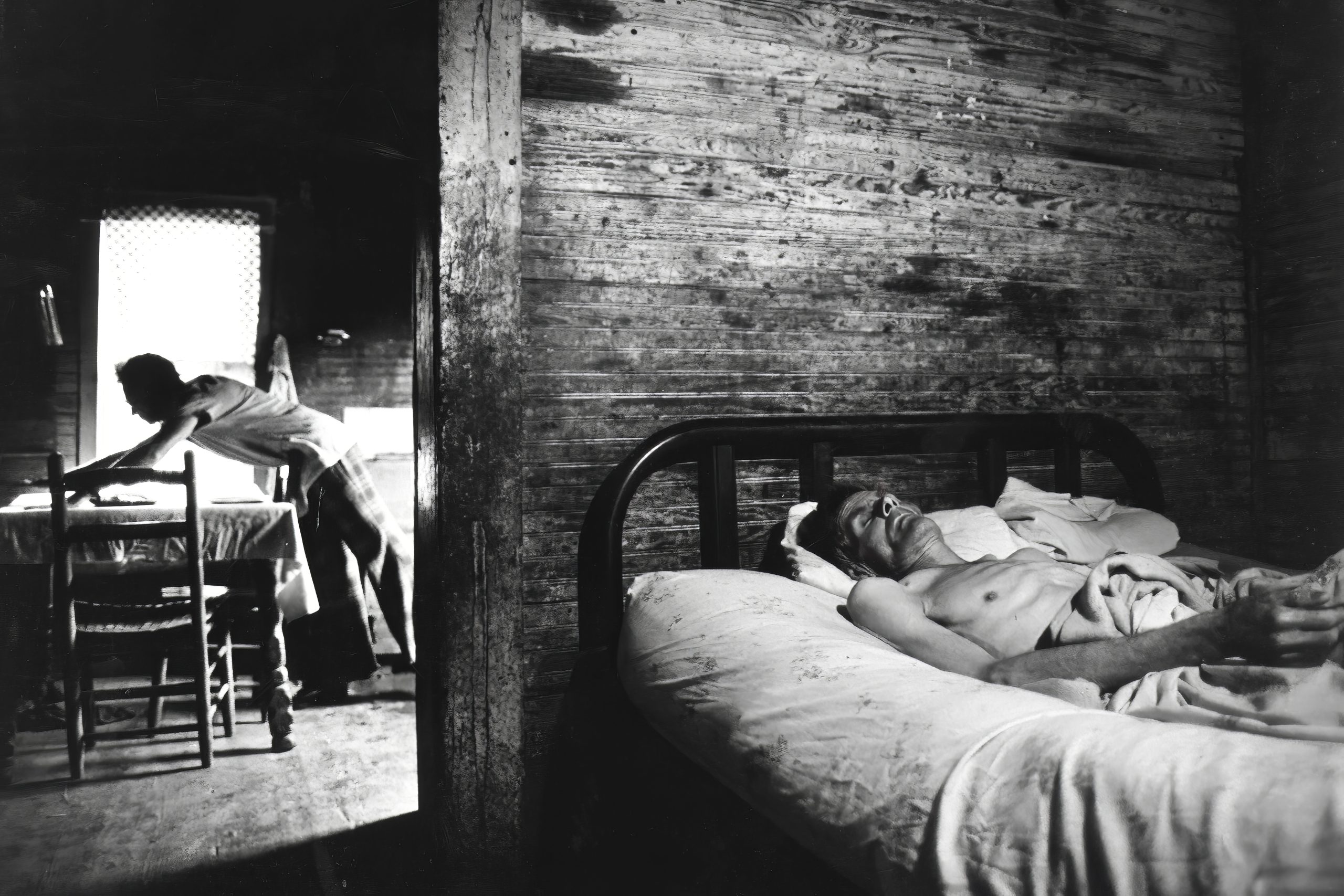HOME MISSION BOARD, 1966 TO 1980
When Walker Knight went to the Home Mission Board of the Southern Baptist Convention in 1959, he was handed photo story packages done by Don Rutledge. He published some of those photo stories. Walker Knight became acquainted with Don Rutledge. When Don traveled to Atlanta for coverage or passing through town, Don stopped by and visited Walker Knight. At the time, they had Ralph Rogers as a photographer. Mr. Rogers’ direction was portrait and commercial. When Mr. Rogers left, they were without a photographer. Walker Knight and Jay Durham hoped they could secure Don Rutledge to fill the position.[17] At the time, Jay Durham was the Director of Media Services for the Home Mission Board.

Don did not drift into mission work. Don Rutledge’s turning from a secular career to expressing his artistry as a Christian was a conscious decision on Don’s part.[18] This was not the only avenue open for him. The economy did not force this decision. In the three months before Don went to work for the Home Mission Board, Don made more money than he did in the next two years at the Home Mission Board, even when his salary and travel budget were included.[19] All this is to say that Don’s acceptance of the invitation to come to the Home Mission Board fulfilled his call to the ministry.
Walker Knight recommended Don to Jay Durham and L. O. Griffith, the Director of Communications, at the Home Mission Board. They replied that Don wouldn’t come to the HMB for our salary. Knight replied, “Let’s let Don make that decision.” “Okay, they said, but will you call him to see if he is interested,” Walker called Don, and he was interested; then Jay made the call, and the Audio Visual Department hired him. Don agreed to come on a trial basis for a year. Right from the start, there were problems. These problems all revolved around changes. Most of the changes were from the old technology to something better. For example, the Home Mission Board used 4 x 5 cameras, and Don was accustomed to using 35mm cameras. Earlier, Don had an experience with LIFE magazine over this issue. He had been assigned through Black Star to photograph a story at Georgetown College in Kentucky. The story was about how the actors were made up to look like stained glass. Don thought this would make a good story and contacted Black Star, who then got LIFE.
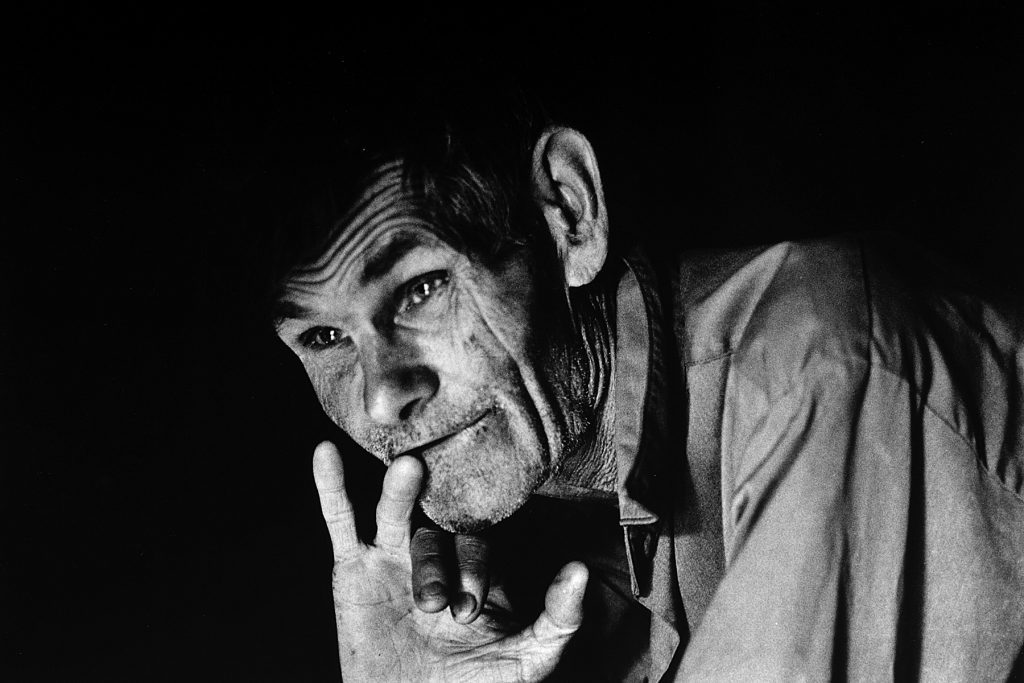
Everything went fine until I checked into the hotel the night before the coverage. Don called the theater department to confirm a story he was doing. The director informed him that another LIFE photographer, Don Cravens, was there to photograph the same story for LIFE. It was not uncommon for this to happen; since LIFE was so extensive, some departments would cover the same story. Don Rutledge contacted Black Star, and after talking with
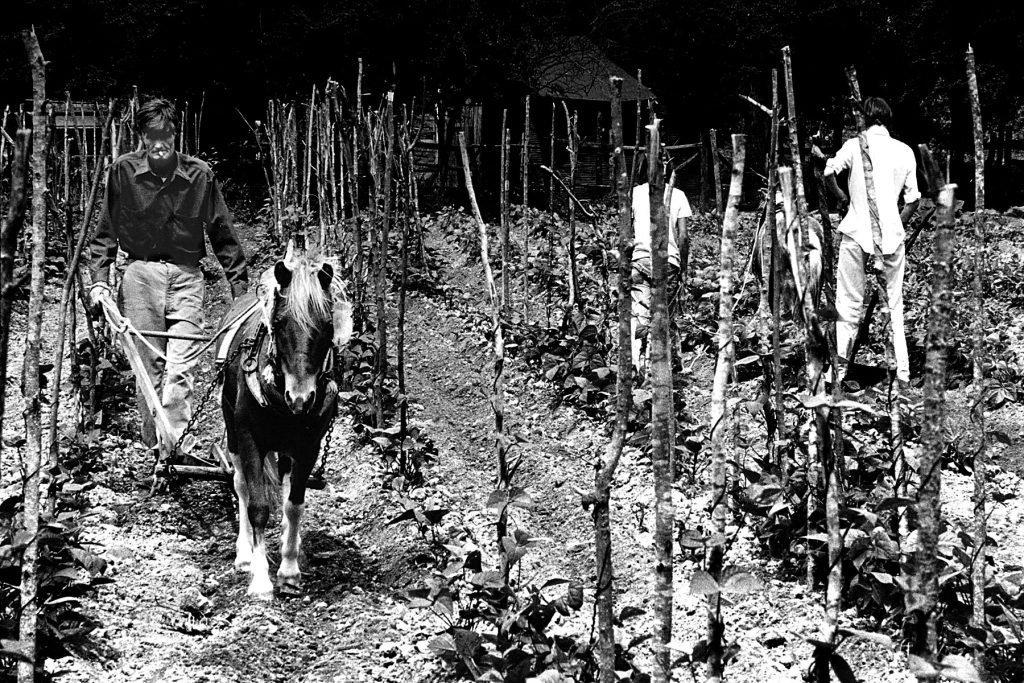
The decision was made to go ahead and shoot the story, and then LIFE would decide on which coverage to use. Don let Don Cravens shoot the story first. Don Cravens shot the story on a 4 x 5 camera and took until 4 am with the actors to shoot. Don Cravens had to set up lights due to the nature of the camera. Don shot the following night on 35mm and was done by midnight. Don used 35mm cameras, allowing him to use available light and record the natural setting easily. LIFE used Don Rutledge’s pictures in their national and international magazine editions. The images were used all over the world by many different magazines. Don Cravens’ pictures were never used. It could be that the time involved in shooting a 4 x 5 does not do well with photographing people in everyday situations.[20] The 35mm allows for a more candid look to photographs since it does not require as much light for exposure or a bulky tripod.
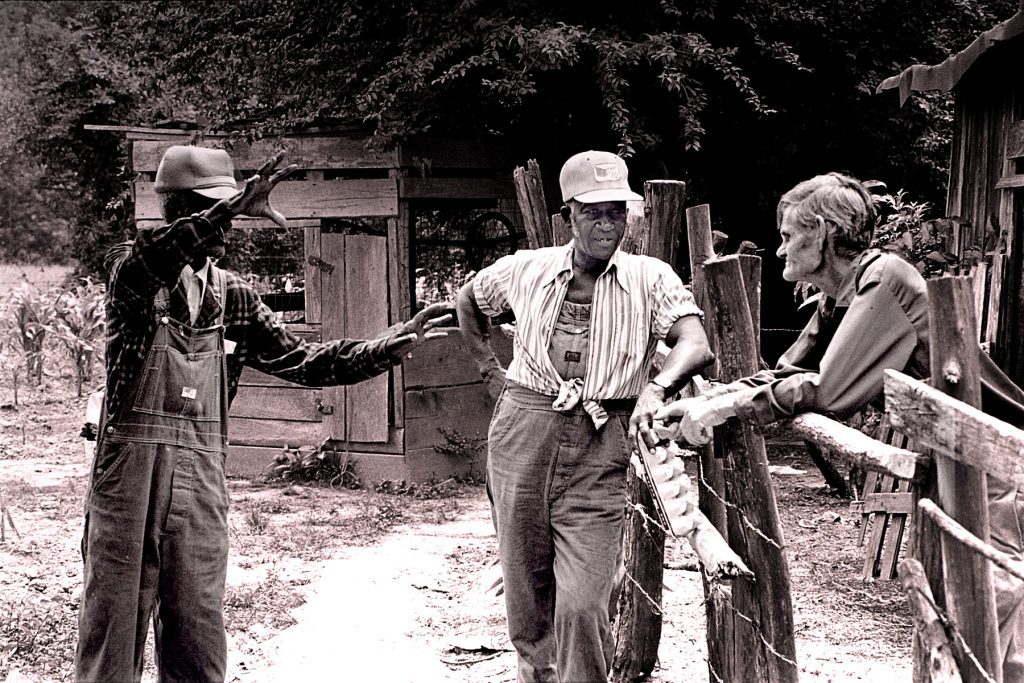
L. O. Griffith, the Director of Communications at the Home Mission Board, was a photographer himself and could not understand why Don could not make the transition from those “amateur 35mm cameras” to 4 x 5 cameras. He liked Don’s work but had a real problem understanding Don’s refusal to shoot with 4 x 5 cameras. The issue of using 35mm versus 4 x 5 had to go to the top of the Home Mission Board to be solved. Dr. Arthur Rutledge, who had no relationship with Don but was the Executive Director, had to decide. Dr. Rutledge stood behind Don, Walker Knight, and Jay Durham. Like the camera issue, many other problems were repeated at the Home Mission Board.[21]
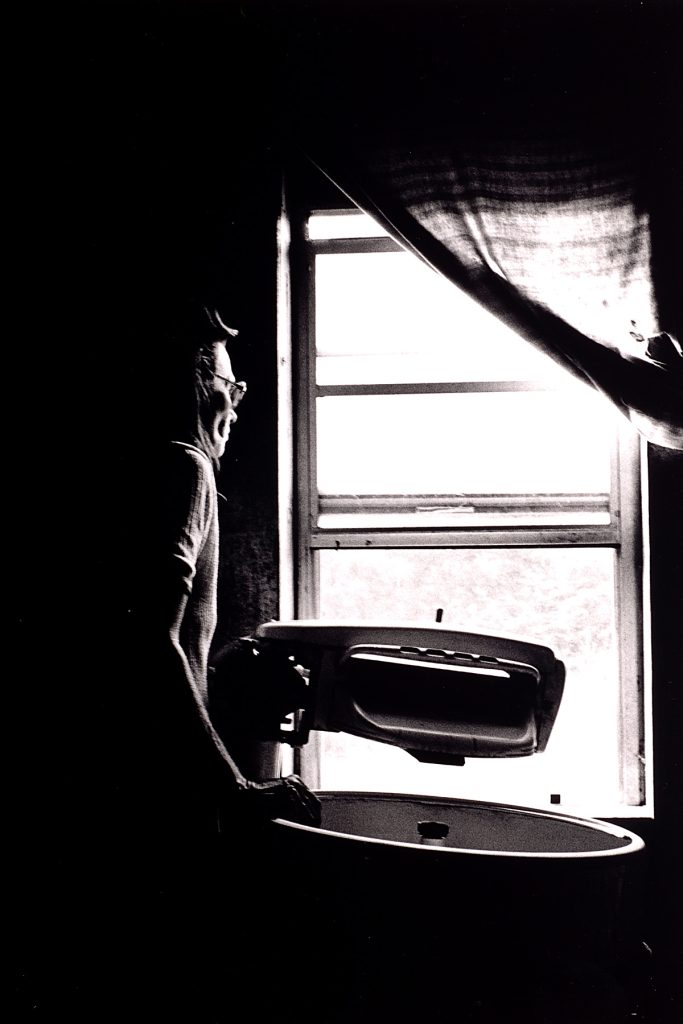
Broadman had a contract with the Home Mission Board regarding film strips. Broadman would produce the filmstrips, and the Home Mission Board would supply the material. They came to the Home Mission Board for an important meeting to set things straight. In a sizeable department session, Don was told how to put his camera for proper exposure and what filters to use in different lighting situations. Shortly after this meeting, the Broadman group complied with the demands of the Home Mission Board. They were to listen to Don and the photo department, not the other way around. This did not work. The Home Mission Board ended up producing the programs by themselves.
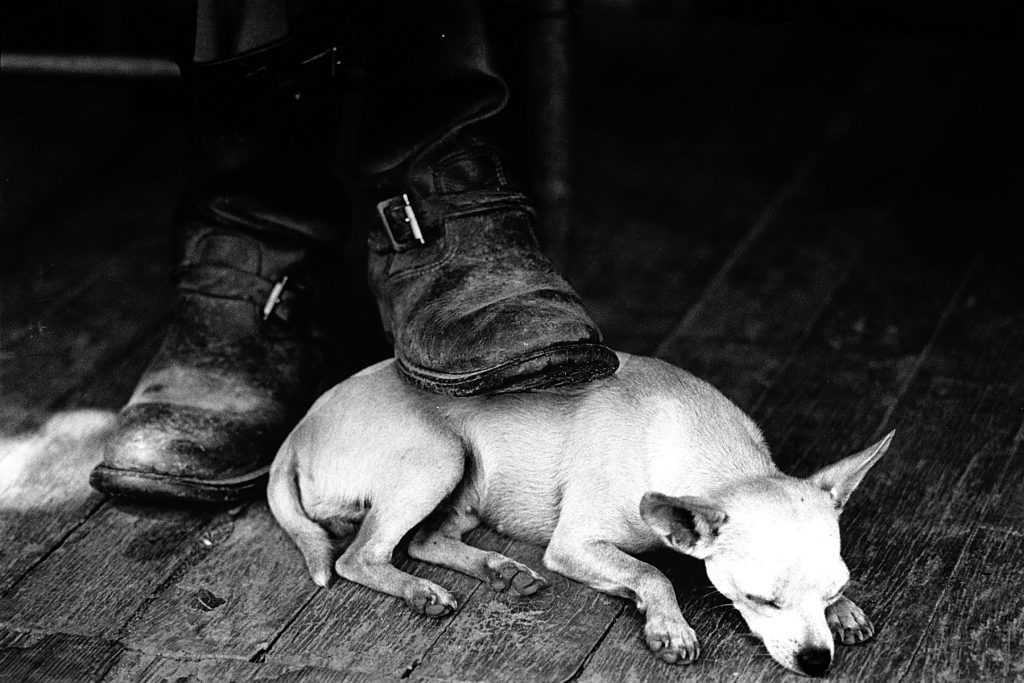
While Don was considering coming to work at the Home Mission Board, Walker Knight hired an associate editor, Dallas Lee. Dallas Lee and Don Rutledge teamed up as a writer and photographer team. The idea of two specialists, the photographer and the writer, was very new for Southern Baptists. They revolutionized the way the Home Mission Board communicated. Walker Knight commented that he “credited Don Rutledge’s photography as changing the nature of photography in the Southern Baptist Convention. We never had a standard before, and Don provided that standard.”[22] Don taught and befriended many photographers throughout the convention. Many of these have worked for national magazines like National Geographic. After meeting Don, Ken Touchton, Steve Wall, Jim Wright, and others went on to significant careers in photojournalism.
Jim Wright was a college student who worked as the only lab technician for the Home Mission Board at the beginning of Don Rutledge’s time at the Home Mission Board. Jim knew very little about printing. Don had contacted the Modern lab Age that Black Star was using in New York. He had Modern Age print some negatives for Jim Wright to use as guides.
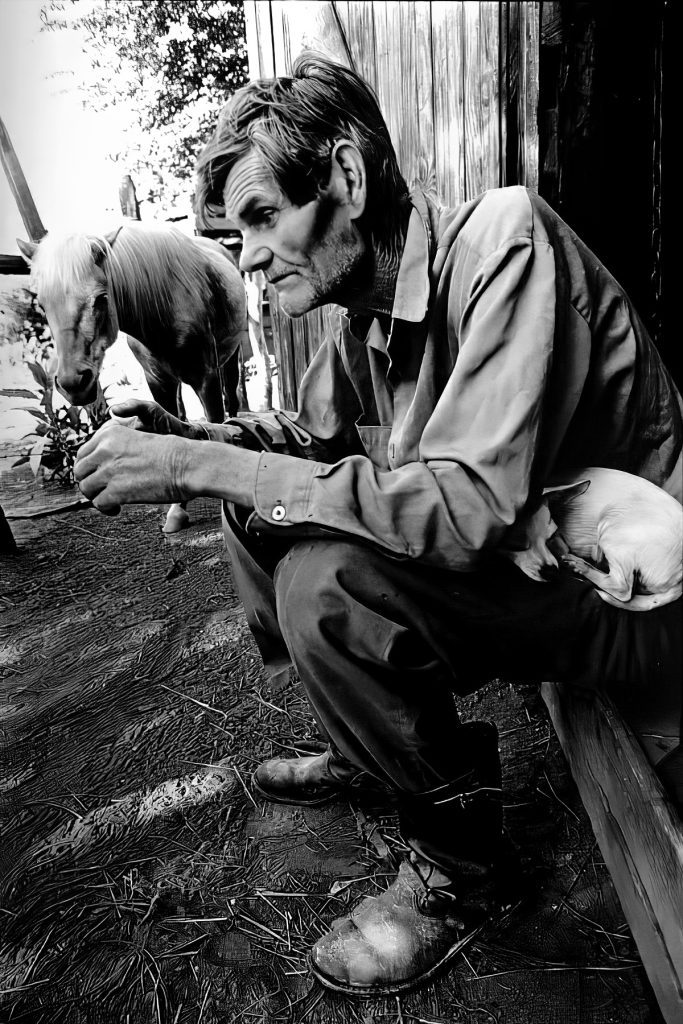
Jim Wright put them on the dark room walls as guides. Jim printed the negatives until he could match the quality of the prints made by the Modern Age. Every good photographer needs an equally good lab technician. The lab technician is just as creative as the photographer. Often, negatives are challenging to print since they were shot under existing light. Existing light gives character and mood to the photograph, but often, it needs a good lab technician to develop within the print the qualities that enhance the communication process and play down the distracting elements. This requires the printer to understand what the photographer was thinking and to bring out those elements to improve the message and to play down the other factors so that the print grabs the viewer and gets their attention.[23] Jim Wright helped establish quality control in the printing process, which is still used today at the Home Mission Board.
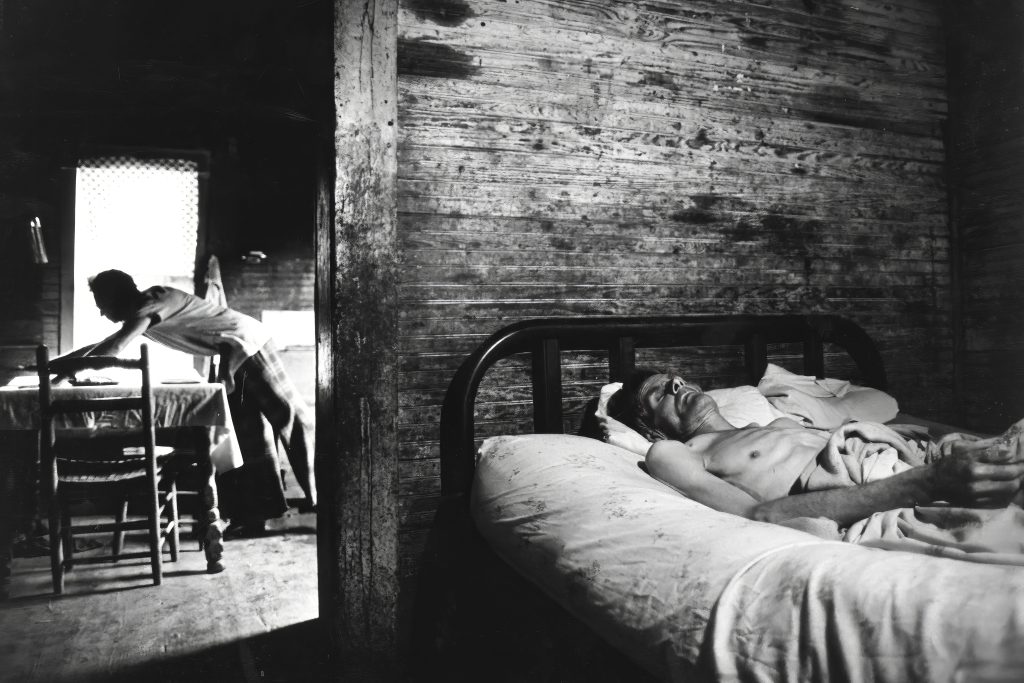
Dallas Lee was excited by the stories Don and he were working on together. He would walk in early, see all that was happening, and assume that Don was busy shooting what he saw. He would find out later that Don often would go into a situation and not pick up his
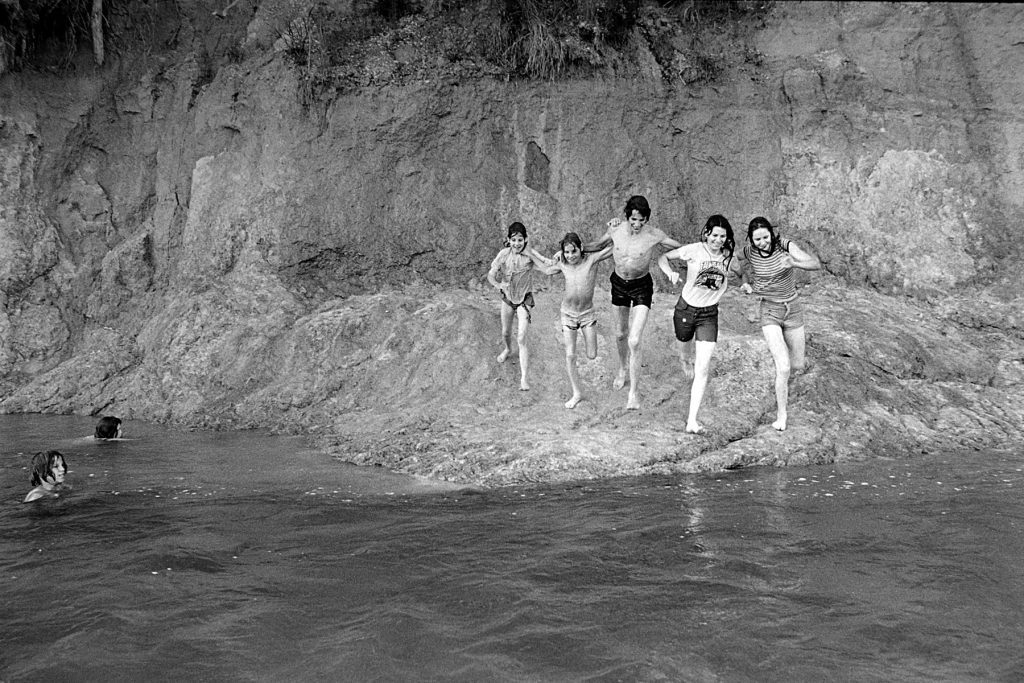
Cameras until he had been absorbed by the place. Don would wait long enough to understand what was happening rather than immediately beginning to shoot.[24] Don has an ability with the camera to see situations. There is always that special moment from every situation that Don would capture. Henry Cartier-Bresson called this the “decisive moment.” Dallas Lee said that Don taught him to have patience and to absorb information before jumping into the story. This was the “rounding out” of a journalist: allowing the story to tell itself rather than his getting in the way of the journalist’s perception of the story.[25] Don’s ability with people and his love of people are the driving forces of Don’s work.[26]
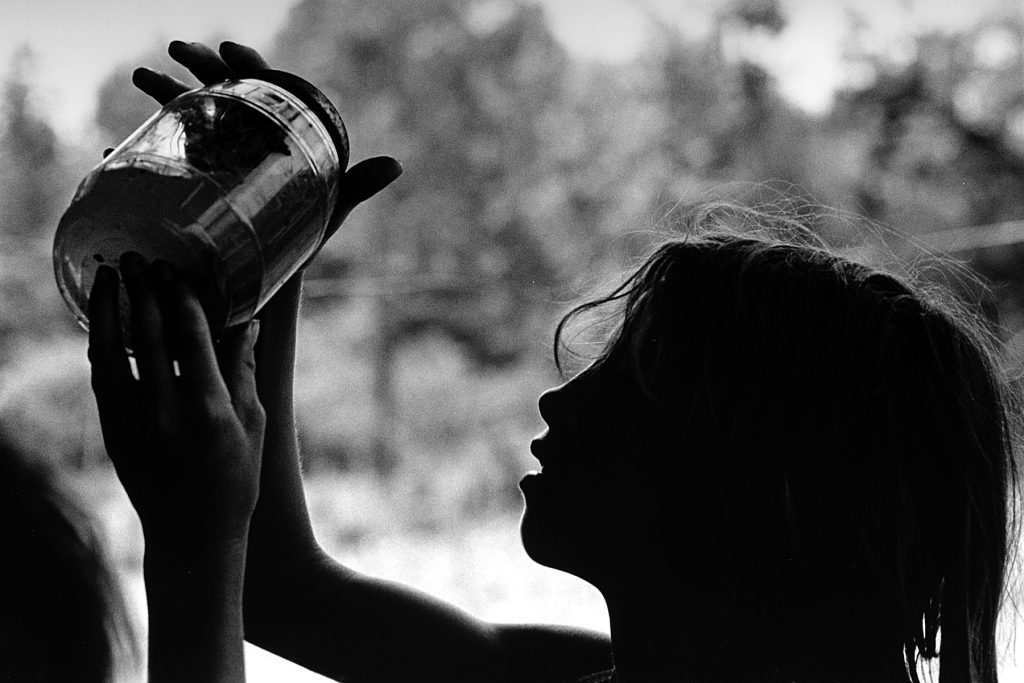
“Skilled hunters don’t crash through the woods with guns blazing or overload themselves with unnecessary gear. On the contrary, they move quietly and carefully so as not to attract attention or frighten off the game. They blend with the environment.”[27] Don’s ability to blend into the woodwork is best shown in the coverage of Bailey King. As one looks at the pictures, one moves from where they are to the subject. This immediacy brings an interaction between the reader and the subject that breaks down barriers of time and space.
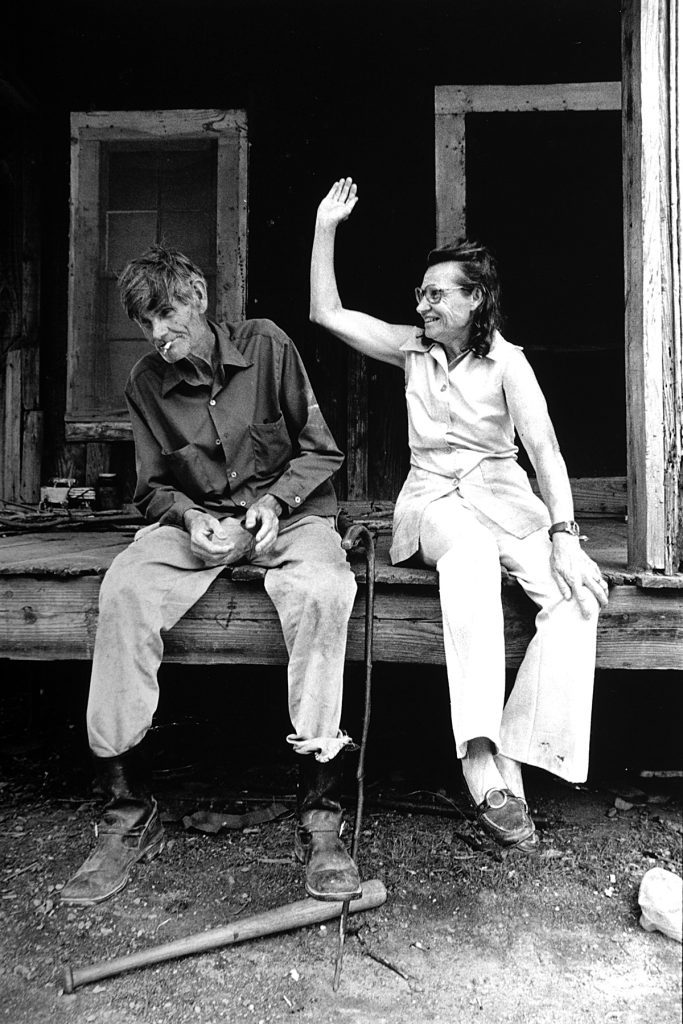
“Being poor ain’t so bad. It’s just inconvenient,” said Bailey King.[28] Bailey King was photographed by Don for some three weeks. Don went to Quinten, Mississippi, to show how a poor family lived in this country. Don bathed in the pond like the rest of the family and ate just like they ate. He contributed just enough to cover his cost without changing the level of the family’s income while he was there. Later, he gave them money to help the family. Due to this story photographed by Don and written Phyllis Thompson, the Kings were provided a brick home by the readership of the magazine.[29] Before going to Mississippi to do the coverage on the King family, Don had been reading Hans Kung’s book On Being a Christian. After listening to Bailey King, Don heard many of the deep theological concepts that he had been reading earlier by Hans Kung out of Bailey King’s mouth. Considering that Bailey King couldn’t read or write, Don realized God speaks to all people uniquely. God seemed to be preparing Don for this story. With this preparation, Don listened to Bailey as a good journalist and for the common sense gained from everyday life with Bailey King.
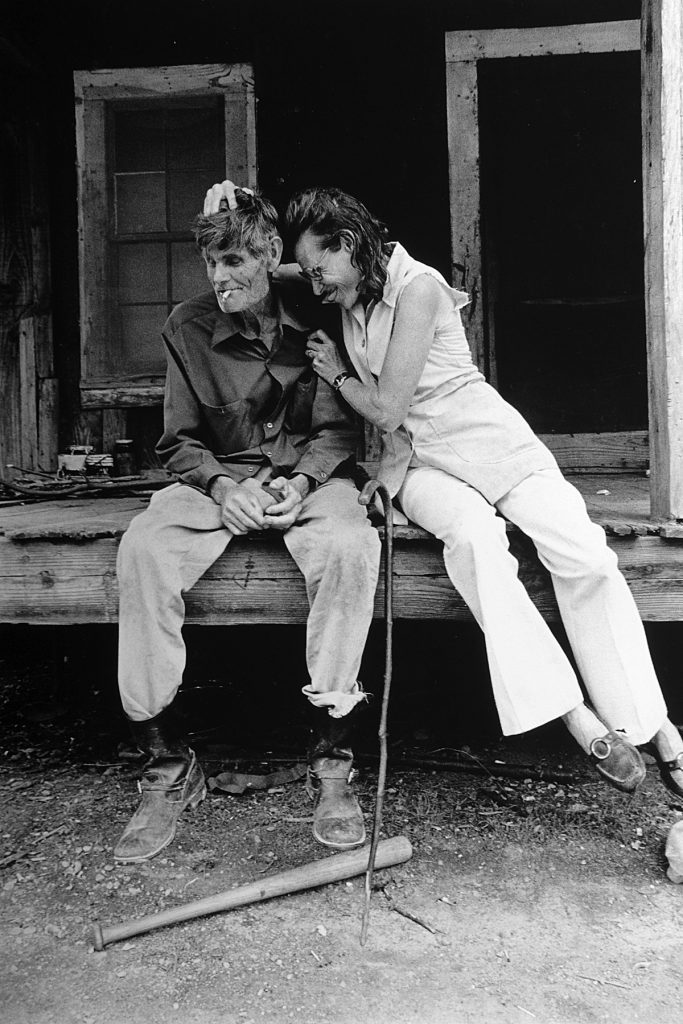
Mr. King lives in a primarily black neighborhood. Everyone around him lives in similar clapboard-styled homes. Poverty is the lifestyle, but that does not make King less of a man. Don sees in his photographs that people will see into the man. Don uses the camera to move the viewer to a new level. People who sing in church all hear the music; some get a little deeper and let the words speak to them, but those who lead the music must be functioning spiritually to move the people beyond the music.[30] Don, like all ministers, must go ahead of the people and be able to bring the audience to the experience. Don moved Southern Baptists with this coverage. As a communicator, he had mastered the skills to show Bailey King to Southern Baptists. He did not allow himself to get in the way of the communication.
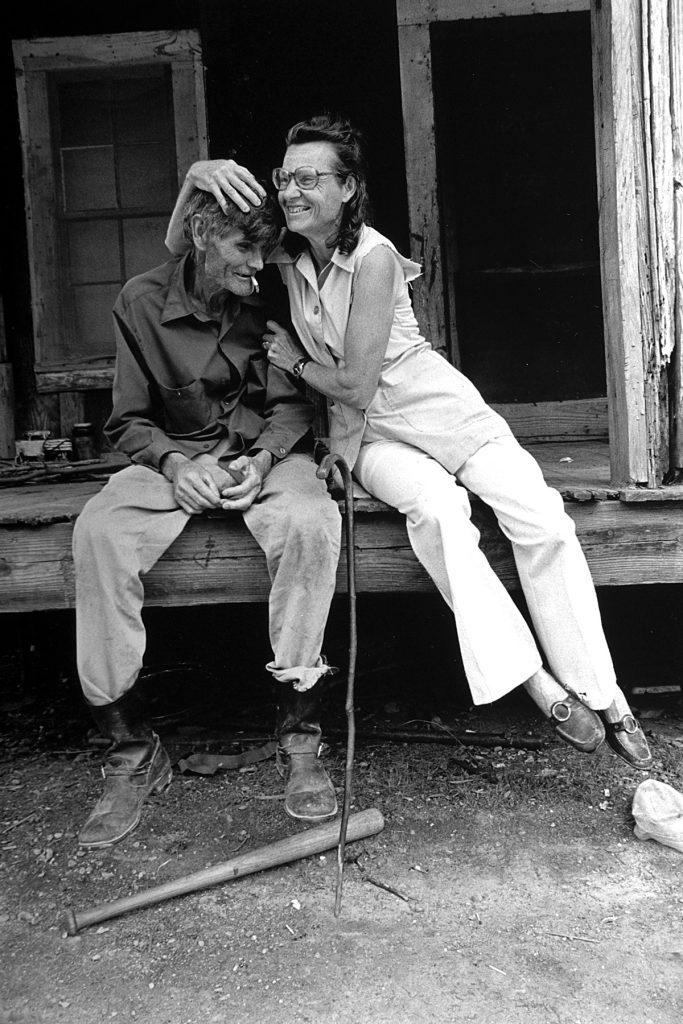
“The Bible says man, not white man, not black man, not Chinaman. Jus’ man. So why do some of us think we are better than others?” —— Bailey King[31] King had an excellent understanding of such a complex idea. Theologians studied for years to develop the same understanding of the Bible that King put into words. The gospel is for everyone and not just for the elite. So what better way to communicate the need for us to go and help the poor than for a poor man to humble us all?
“I have been workin’ since I’m five, and I ain’t got no more now’n I had then. It is hard for me to walk. But you can’t give up jus’ ’cause you hurt a little bit. If you fall on your knees and break down ’round here, you ain’t gonna get up no more.” –Bailey King.[32]
As one looks at Don’s photographs, one notices that often the pictures have two or three pictures in one picture. Don excels in this approach more than any other dominant photo style he does. Usually, when Don uses this composition technique, there is a primary subject in the photograph. Then, the secondary element adds a touch of information about the environment. It also adds that quality called the “slice of life.” By including these extra elements, the photograph does not look trite or so composed as it just makes you feel like you were there yourself. As a result, the photograph has much information and keeps giving information every time one looks at the photograph.
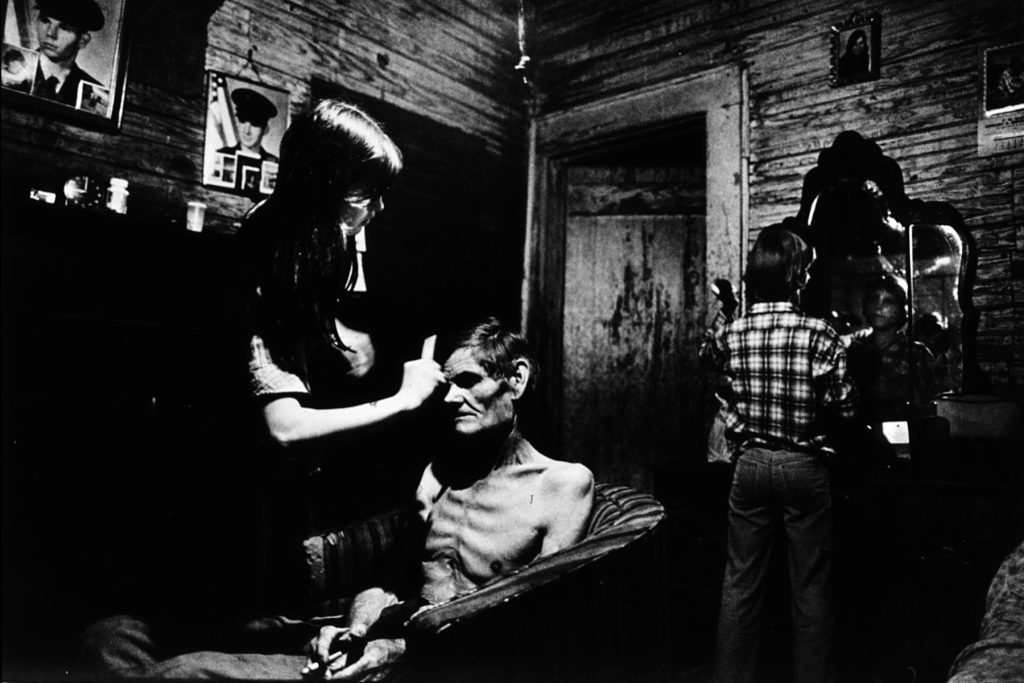
Many photographers like to keep things simple. For example, they may use a tight shot to show the tear in the child’s eye. Don does this also, but his ability to capture the big picture sets him apart from most of his colleagues in the profession.
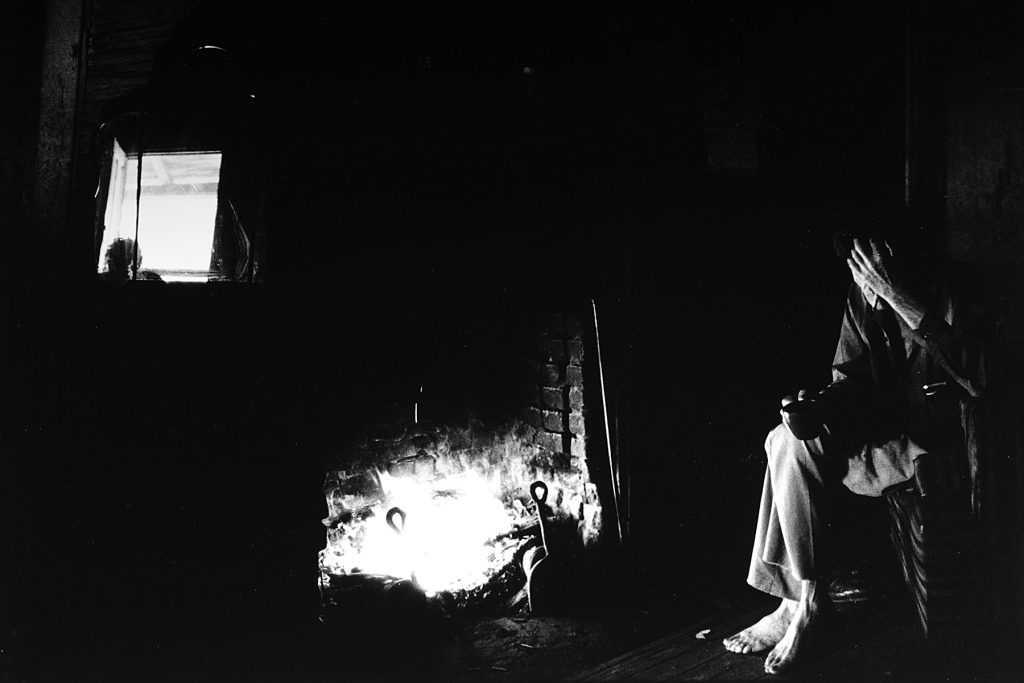
To tell someone’s story through the use of pictures, one must come to a deep understanding of the people he is photographing. He needs to understand the subject well enough to simplify the message so it does not get lost in the communication process. By living with the King family for three weeks, Don got to know the people. Many other photographers have tried to do what Don had done, and usually, they have come back too soon with the story. Often, the story others come back with is their perception of the situation. Many photographers can not get their egos out of the way to listen to the people.
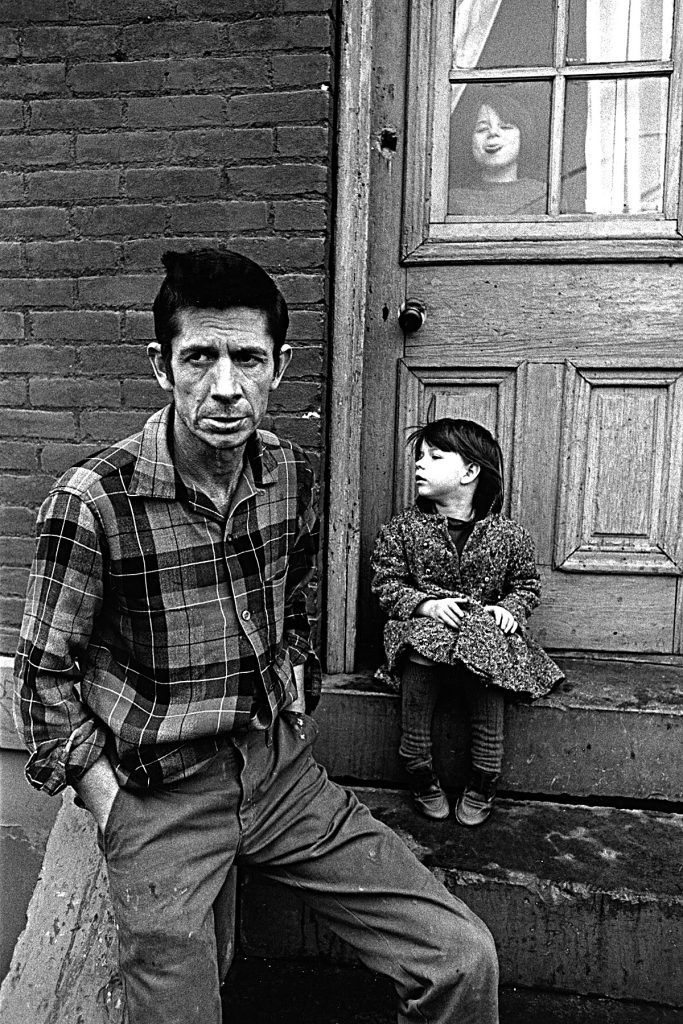
While egos are being mentioned, it is essential to note that most people who are photojournalist may have relatively large egos. Without some ego in this business of photojournalism, many would not survive. The ego gives the drive necessary in a field so competitive. Photojournalists are called many names by media personnel. Christlike is far from the description provided to the media in general. The difference with Don is that his ego does not show like most journalists.[33] What drives Don is not the ego but the love of God. Don listens to Christ in his walk; in this way, he is very different from the secular photojournalist. “When a bunch of photographers, including some big names like Eugene Smith, would get together, Don was the one who would go for coffee for everyone——he’s just that kind of a guy,” said Knolan Benfield.[34] Knolan Benfield was the Director of Photographic Services for many years at the Home Mission Board and worked very directly with Don. Don was his manager. Knolan Benfield is this writer’s uncle and introduced Don Rutledge to him.
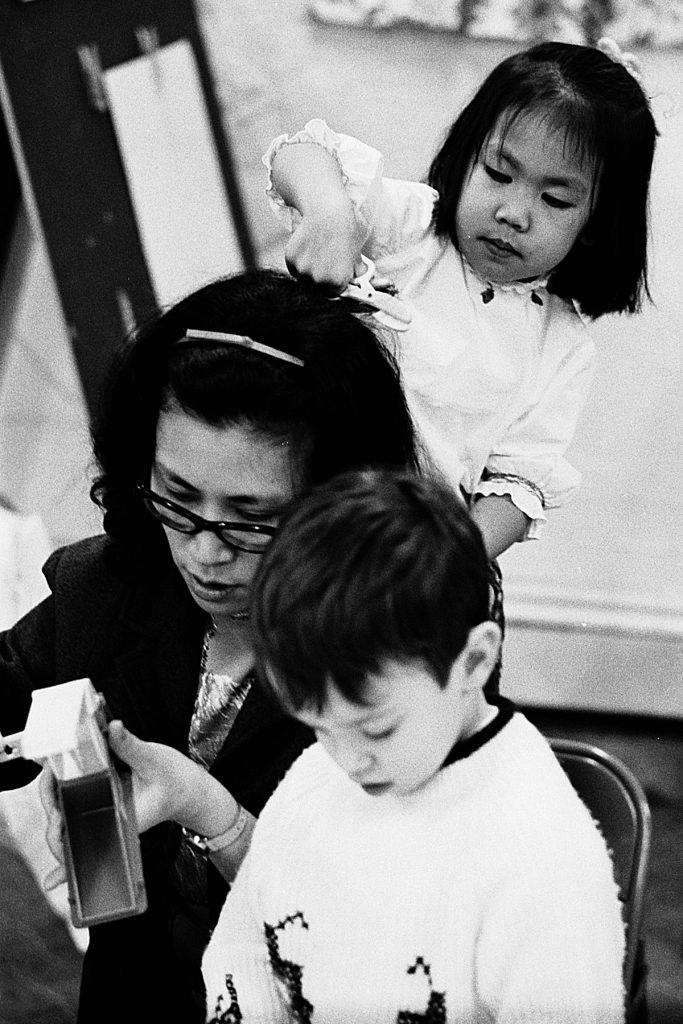
“The most important thing about Don is that he almost single-handedly raised the level of photojournalism within the convention and also created a standard of excellence by which everybody else who worked around him had to be measured or measured themselves. These two things are enormous contributions to Southern Baptist communications efforts. His presence demands such a high production standard from editors, writers, and other photographers. Don does all this with a great deal of humility. This is also reflected in his willingness to help young photographers. This all stems from Don’s enormous sense of security within himself. He is sure of who he is and what he can do. He knows what his abilities are. This gives him a solid foundation for helping others without any threat to his career, fame, or notoriety.”[35]
Don can help one grow in the field of communication. His gift is pointing out the weaknesses and the strengths.[36] After the writer had been taking his work to be critiqued by Don for several years, the writer noticed that Don would look for positive things on which to comment and would pass over much of the work. As the writer focused on the positives, the more Don would comment. Finally, when the writer became bold and asked Don what was wrong with some other photographs, Don spoke more openly. Don is careful not to criticize. He looks for the positives in the work of others.
Knolan Benfield remembers many times when he thought that Don should tell the person to try another field. Don would ask others to review the work and let them state the negatives. On one occasion, a photographer came to see Don and, after talking with the man, introduced him to the writer. After looking at the portfolio, the writer made a few suggestions for improvement. Several months later, the same man returned with the same portfolio. No changes had been made. It was as if the man never listened to Don or the writer. Don commented later that he could not believe one could have the nerve to show the same portfolio to him twice and not correct the problems.
Don’s graciousness was needed to talk to the Southern Baptists in leadership at the Home Mission Board and other agencies. He had a way of gradually getting others to join his team. He did not put down their work, but by showing what he was doing, he led others to join in and participate in the process.
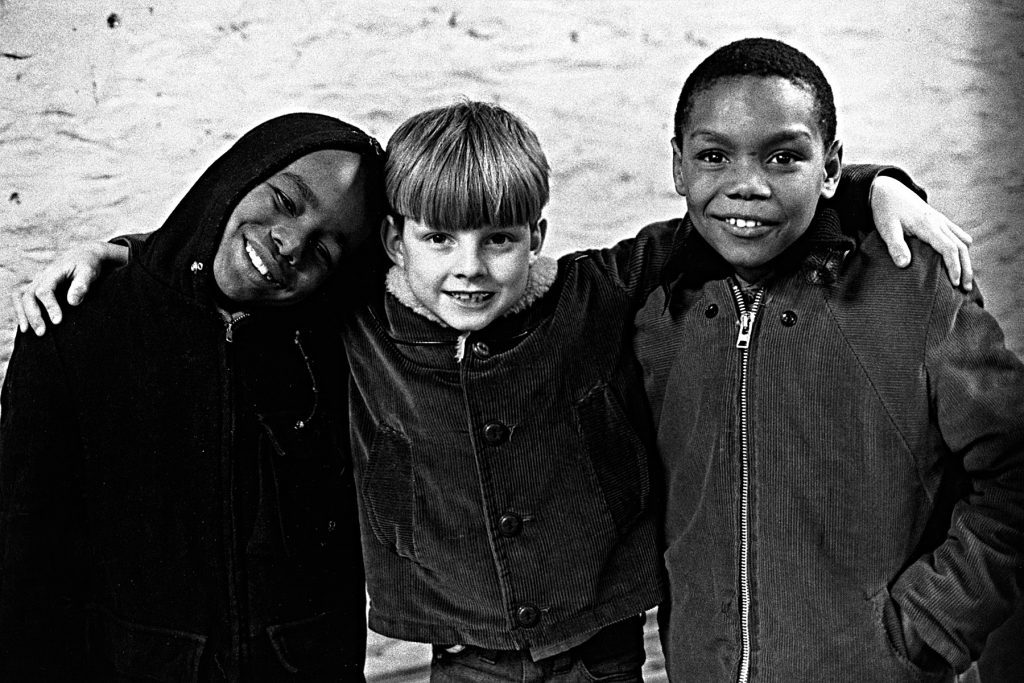
Dallas Lee, naive and still young in his profession, thought he could photograph and write with the best of them. After meeting Don, he was humbled.[37] Don has only good things to say about many of his colleagues at the Home Mission Board. His admiration for Dr. Arthur Rutledge’s direction in home missions made Don proud to be a Southern Baptist and inspired him to do some of his best work ever up to that point.
Don cannot do all it takes to put out the work of his caliber alone. It takes the team approach to make it happen. Don believed that the photo lab did its best to print his job to make it stand out and make people stop and look. Don always had professional labs print his work. While with Black Star, He tried to develop his style. One day, he walked into the lab he used, and a lab technician was out front. He asked Don if he was Don Rutledge. The man wanted to talk to Don. He had been printing Don’s work for many years and admired it. Don did not want the man to know that he was unaware of his style. So he asked the man what he liked about his style. The man said he liked the way he treated people with dignity. He noticed that Don was very religious and had a deep appreciation for social issues. This man told Don so much about himself that at that moment, Don realized that what he had been working so hard to do was succeeding. He also learned how much one knows about him by looking at the photographs.
The central theme in all of Don’s work is LOVE.
If I speak in the tongues of men and of angels, but have not love, I am only a resounding gong or a clanging cymbal. If I have the gift of prophecy and can fathom all mysteries and all knowledge, and if I have a faith that can move mountains, but have not love, I am nothing. If I give all I possess to the poor and surrender my body to the flames, but have not love, I gain nothing.
Love is patient, love is kind. It does not envy, it does not boast, it is not proud. It is not rude, it is not self-seeking, it is not easily angered, it keeps no record of wrongs. Love does not delight in evil but rejoices with the truth. It always protects, always trusts, always hopes, always perseveres.
Love never fails. But where there are prophecies, they will cease; where there are tongues, they will be stilled; where there is knowledge, it will pass away. For we know in part and we prophesy in part, but when perfection comes, the imperfect disappears. When I was a child, I talked like a child, I thought like a child, I reasoned like a child. When I became a man, I put childish ways behind me. Now we see but a poor reflection as in a mirror; then we shall see face to face. Now I know in part; then I shall know fully, even as I am fully known.
And now these three remain: faith, hope and love. But the greatest of these is love.[38]
While working with Black Star, Don communicated this message through his photographs and did not necessarily need to work at the Home Mission Board to accomplish this task. Today, many Christian photojournalists work in secular positions nationwide, communicating the Christian message through their pictures. One group that the writer and many others are members of is Christians in Photojournalism.
Why did Don leave Black Star, come to the Home Mission Board, and take a cut in pay and status to work with people who frequently produced inferior quality products? This question directly points to Don’s pioneering spirit about him and his work. Photojournalism is a relatively new profession. LIFE did not transpire until 1936, and this magazine developed the picture story and fashioned the field of photojournalism. Staying with the significant magazines would have proven very lucrative for Don. Walker Knight knew that photojournalism was the direction needed. However, few Christian photojournalists existed who could have made the dreams of Walker Knight and others become a reality for Southern Baptists. Finally, Don Rutledge was able to do this. His studies at a very conservative Bible college and his upbringing in the Baptist life, coupled with his skills as a photojournalist, made him a prime candidate to deal with many of the issues he was to take on while working for the Southern Baptists.
Many leaders in the Southern Baptist Convention have one thing in common. They were pastors at one time or another. This common connection helped Don in ways that other photojournalists after him have not had. His ability to understand those he was working with when dealing with complex issues helped him communicate effectively. While in college studying psychology, Don learned valuable insight into human nature from one of his professors. When it comes to logic and emotion on any given issue, emotion usually wins out in the argument.[39] Walker Knight realized that by writing alone, he was preaching to people, but with the photographs, people saw for themselves the condition of people and how they were living. The photo argued through emotion. Don let his work speak for itself and used a few words in meetings to make his points. If people liked Don’s work, respected his opinion, and asked for his opinion, then Don spoke. On a few rare occasions, Don gave his idea when not requested.
After coming to the Home Mission Board in 1966, Don significantly impacted the agency’s publication work. Don’s coverages and the writers he worked with highly affected Southern Baptists. People were writing to complain and to complement the magazine. Due to Don’s abilities, the Home Mission Board made a difference in Southern Baptists. Walker Knight had moved in the direction he saw as his calling, and Don Rutledge visually helped make it possible.[40]
[17] Mr. Walker L. Knight, interview by author, Tape recording, Atlanta, Georgia, 22 November 1992. [18] Ibid. [19] Don Rutledge, Interview by author, Richmond, Virginia, 5 November 1985. [20] Ibid. [21] Don Rutledge, Interview by author, 15 January 1993. [22] Interview with Knight. [23] Interview with Rutledge. [24] Mr. Dallas Lee, interview by author, Tape recording, Atlanta, Georgia, 7 January 1993. [25] Ibid. [26] Interview with Knight. [27] Dave LaBelle, The Great Picture Hunt, (Bowling Green: Kentucky, Western Kentucky University, 1991), 15. [28] Phyllis F. Thompson, “Somebody, A Poor Man,” Home Missions, December 1979, cover. [29] Rutledge. [30] Dr. Leafblad, Fall 92 lectures in Introduction to Church Music. [31] Thompson, 6. [32] Ibid. 8. [33] Interview with Lee. [34] Knolan Benfield, Interview by author, 30 May 1992. [35] Everett Hullum, interviewed by author, Tape recording, Atlanta, Georgia, 5 January 1993. [36] Ibid. [37] Interview with Lee. [38] 1 Corinthians 13:1-13 New International Version. [39] Interview with Rutledge. [40] Interview with Knight.

